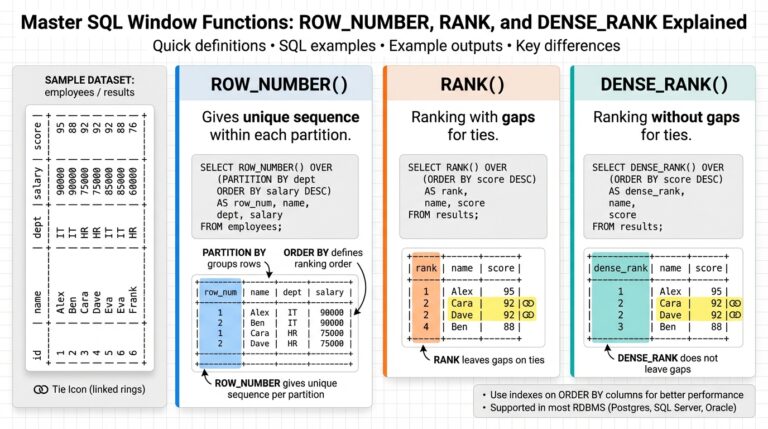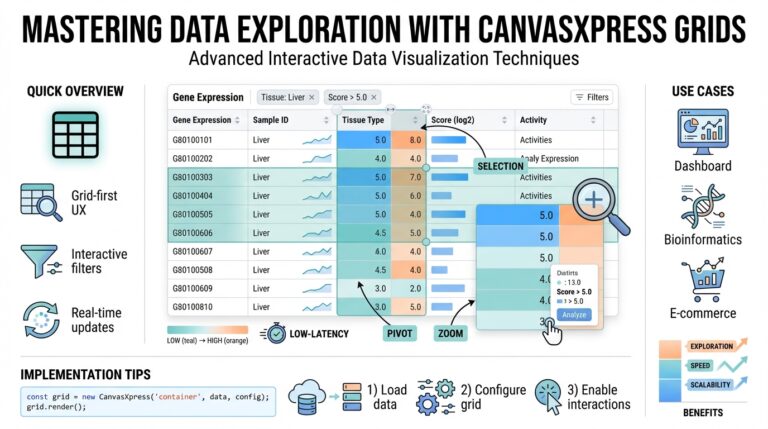Understanding ChatGPT Go: What Is It?
ChatGPT Go is OpenAI’s latest offering designed to make conversational AI more accessible and affordable for users in India. Priced at just ₹399 per month, it aims to bridge the gap between free access and the more premium ChatGPT Plus tier. But what exactly sets ChatGPT Go apart, and how does it benefit users in a fast-evolving AI landscape?
At its core, ChatGPT Go leverages cutting-edge AI technology, including support for the much-anticipated GPT-5 model. While most users worldwide are familiar with ChatGPT’s helpful and interactive chat features, ChatGPT Go provides enhanced speed, priority access—even during peak times—and early access to new features as they roll out. This is especially crucial in India, where rapid digital adoption is fueling demand for powerful, multilingual AI tools.
Think of ChatGPT Go as the “;fast lane”; for conversational AI. Where the free tier might restrict access during high-traffic periods, Go subscribers enjoy uninterrupted service. The inclusion of GPT-5 support means users can tap into the latest advancements in language understanding and generation, which translates to even more accurate, context-aware, and natural conversations. India’s tech adoption rates are among the world’s fastest, making the timing of this launch particularly strategic.
For students, professionals, and small business owners, having access to GPT-5 through ChatGPT Go can be a game-changer. Imagine a student instantly generating detailed essay outlines or receiving instant, personalized tutoring. Entrepreneurs can draft business emails, summarize research, or generate marketing ideas in seconds. These real-world scenarios show how ChatGPT Go can boost productivity and creativity for a fraction of the cost compared to other platforms.
What’s more, ChatGPT Go fits seamlessly into existing workflows and is accessible across devices, from mobiles to desktops. The subscription model is straightforward with transparent pricing and rapid onboarding, making advanced AI accessible without the need for a steep learning curve or technical expertise.
To read more about the technological capabilities that power the latest generation of GPT models, visit Google AI Blog, or dive into the evolving landscape of conversational AI on WIRED.
Breakdown of the ₹399 Pricing: What Do You Get?
The new ChatGPT Go plan, launching in India at ₹399 per month, marks a major shift in the accessibility of advanced AI technologies in the country. But what exactly does your subscription get you? Here’s a detailed look at the features, perks, and value packed into this plan.
1. Access to Advanced Language Models, Including GPT-5
One of the most significant benefits of the ChatGPT Go plan is early access to OpenAI’s cutting-edge models, including GPT-5. This means enhanced accuracy, context retention, and language understanding compared to previous versions. GPT-5 not only generates more natural, human-like responses but also reportedly improves task completion rates and creative outputs. You can read more about the evolution of AI models on Scientific American.
2. Priority API and Chat Access
With your ChatGPT Go subscription, you’ll avoid the notorious wait times during peak hours that free users sometimes experience. Subscribers receive priority access to both the ChatGPT web and mobile apps, ensuring faster response times and more reliable uptime. This is crucial for professionals and businesses who rely on the platform for productivity or client communication.
3. Enhanced Data Privacy and Security
OpenAI offers improved data handling for Go subscribers, assuring that your chat history and prompts are treated with a higher level of confidentiality. While not the enterprise-grade privacy protocols (reserved for business plans), this upgrade is significant for users sharing sensitive or proprietary information. For information on data privacy practices, see OpenAI’s official privacy policy.
4. Additional Usage Credits and Extended Limits
Unlike the free tier, which comes with daily or monthly caps on usage, ₹399 gives you much more generous usage allowances. This includes longer and more frequent conversations, expanded file uploads, and integration capabilities for productivity enhancements. For example, students and researchers can now run more extensive literature searches, and entrepreneurs can use AI for rapid prototyping or code generation without hitting barriers.
5. Priority Support and Early Feature Releases
Subscribers enjoy access to priority customer support, making it easier to resolve technical issues or request assistance with advanced features. Plus, you’ll often get early access to new features or model updates before they’re rolled out to the general public. This ensures you always stay ahead in leveraging the latest breakthroughs from OpenAI.
For more on how early access benefits innovation, check out TechCrunch’s coverage of recent AI feature launches.
6. A Price Point Designed for India
The ₹399 monthly fee (about $4.79 USD) is much lower than comparable subscriptions in other regions, where similar plans can cost twice as much or more. This pricing strategy reflects OpenAI’s growing focus on expanding AI adoption in fast-growth markets like India, aiming to bring powerful tools to larger and more diverse user bases. Economic analyses on local pricing can be found at The Economic Times.
All told, the ChatGPT Go plan strives to make world-class AI both affordable and practical for millions of Indian users, from students to startups and corporate professionals alike.
Exclusive Features: GPT-5 Support and More
One of the most anticipated highlights of ChatGPT Go’s debut in India is its integration with the forthcoming GPT-5, positioning it ahead of much of the global AI curve. This upgrade means users not only gain access to faster, more nuanced conversations, but also become early adopters of technology that is yet to be fully rolled out worldwide. Let’s break down what makes these features truly exclusive, and why early access to GPT-5 is important for both individuals and businesses leveraging AI.
Cutting-Edge GPT-5 Support
GPT-5 is OpenAI’s next-generation language model, expected to significantly outpace GPT-4 in terms of natural language understanding, reasoning, and generative capabilities. Early integration in India—especially at an accessible monthly rate—demonstrates OpenAI’s commitment to broadening the global reach of state-of-the-art AI. Users can expect improvements such as:
- Contextual Understanding: GPT-5 will be able to process longer conversations and recall previous exchanges with greater detail, making interactions more coherent and personalized.
- Complex Problem-Solving: Professionals in legal, medical, educational, and creative industries will benefit from GPT-5’s enhanced ability to understand complex, multi-step instructions. This opens new use-cases, such as drafting nuanced legal contracts or debugging advanced software issues.
- Multilingual Excellence: With India’s diverse linguistic landscape, powerful multilingual support means users can interact in multiple Indian languages, including Hindi, Bengali, Tamil, Telugu, and more. This helps democratize access to AI for millions of users. For background on GPT-5’s expected capabilities, Forbes has a detailed overview.
Always-On Access and Optimized Performance
ChatGPT Go is designed as a lightweight, always-on companion, with rapid response times that are crucial for both everyday users and businesses. Instead of waiting in queues or facing downtime during high-traffic periods—a common challenge for free users—subscribers get dedicated access. This ensures uninterrupted workflow whether you’re brainstorming content ideas, conducting research, or even managing customer support in real-time.
- Reduced Latency: Expect near-instant replies, even when usage is peaking globally. This is supported by dedicated OpenAI infrastructure for Go users.
- Enterprise-Grade Security: Know your data is protected, with end-to-end encryption and compliance to international protocols (see OpenAI’s security commitment for more details).
- Cross-Device Sync: Stay connected and transfer conversations seamlessly from your smartphone to your laptop or tablet; a feature highly valued by professionals working on-the-go.
Advanced API Access and Developer Tools
For startups and tech enthusiasts, ChatGPT Go provides priority access to the latest APIs and development resources, allowing them to experiment with, and deploy, new GPT-5 powered applications. OpenAI has prioritized developer engagement, ensuring detailed documentation, community support, and tutorials are readily available. Some exclusive tools include:
- Plug-ins Integration: Developers can tap into third-party plug-ins, building custom workflows that leverage GPT-5’s improved contextual reasoning.
- Beta Features: As part of the Go rollout, users may receive early access to experimental features—from advanced image analysis to automated report generation—giving them a competitive edge.
With these features bundled at a simplified entry price for India, OpenAI is setting a new standard for accessible, comprehensive artificial intelligence. Whether you’re seeking efficiencies at work or looking to develop the next viral app, access to exclusive GPT-5 features ensures you’re at the forefront of the AI revolution.
How ChatGPT Go Differs from Other OpenAI Offerings
ChatGPT Go is making headlines with its launch in India, and many are curious about how it stands apart from the slew of offerings already available from OpenAI. Let’s break down its unique value, positioning, and usage scenarios that set it apart from classic options like ChatGPT Plus, GPT API access, and enterprise solutions.
Personalized, Budget-Friendly Access
One of the major distinctions of ChatGPT Go is its affordability. Priced at just ₹399 per month, it’s a more accessible entry point for Indian users who want advanced conversational AI without the higher recurring costs of packages like ChatGPT Plus. While Plus users enjoy priority access and faster responses, with Go, OpenAI aims to democratize access by providing a powerful suite of features—including GPT-4, and even GPT-5 support in the future—at a significantly lower price.
For those who want more technical information about the differences in subscription tiers, OpenAI’s own announcement on ChatGPT Plus gives a transparent overview of what traditional subscriptions entailed before Go’s arrival.
GPT-5 Readiness: Future-Proofing for Users
The most noteworthy feature is ChatGPT Go’s promise of GPT-5 support, allowing Indian users early access to the state-of-the-art model as it becomes available. This contrasts with most existing offerings, where the transition to newer models incurs delays or higher pricing. This early mover advantage is significant for users who want to stay ahead in fields like research, content creation, software development, and educational services. More about the evolution from GPT-3.5 to GPT-4 can be explored at this Scientific American article, which hints at why seamless upgrades matter.
Local Optimization and Language Support
Unlike generic global offerings, ChatGPT Go is tailored specifically for India’s linguistic richness. It supports not only English but increasingly conversational Hindi, Bengali, Tamil, and several regional languages. The localization is not just for communication—it also enhances understanding of cultural nuances and context. For professionals and businesses working in India’s multilingual landscape, this is a dramatic shift, allowing adoption of AI in customer service, education, and more. Details on the importance of language localization in AI can be found at MIT Technology Review.
Flexible Integration and Use Cases
ChatGPT Go is designed to be plug-and-play for diverse personas—students, freelancers, small businesses, and individual creators—who may not need the scale (or the pricing) of OpenAI’s developer APIs. With easy onboarding and monthly billing, users can experiment without long-term commitment, ideal for fast-growing startups or individuals exploring AI for content, coding, or study support. Step-by-step, this user journey is much different from the technical setup required for API integrations, which you can read more about at ZDNet’s OpenAI API guide.
Privacy and Data Considerations
Unlike enterprise-level solutions, where companies enjoy advanced compliance and control, ChatGPT Go balances simplicity with responsible data usage. Indian users get responsiveness and new features without complicated contracts or data-sharing requirements. This approach aligns with OpenAI’s ongoing efforts to enhance transparency and empower individual users.
In summary, ChatGPT Go is OpenAI’s answer to widespread demand for affordable, locally-optimized, future-ready AI in India—delivering unique technical and practical benefits with a user-first focus. As the GPT ecosystem expands, such nuanced offerings promise to widen access and foster rapid experimentation on a massive scale.
The Indian AI Ecosystem: Why Launch Here?
India’s AI landscape is experiencing massive acceleration, and OpenAI’s decision to launch ChatGPT Go here isn’t just a coincidence—it’s strategic. The country represents an intersection of tech-savvy consumers, a booming startup scene, and government-led digital transformation. Let’s explore why India is such fertile ground for next-generation AI offerings:
- Demographic Leverage: With over 1.4 billion people and a median age below 30, India boasts one of the world’s largest pools of digital natives. This demographic is quick to adopt new technology, as evidenced by the strong uptake of AI-driven platforms like WhatsApp, Paytm, and Byju’s. A recent NASSCOM report highlights that AI could add up to $500 billion to India’s GDP by 2025.
- A Booming Tech Talent Pool: India produces more than a million engineering graduates annually, making it a breeding ground for AI talent and innovation. Global tech companies, including Microsoft and Google, often tap into this resource for research and development. As Forbes points out, India is poised to lead the AI revolution, making it the perfect testbed for products like ChatGPT Go.
- Entrepreneurial Ecosystem: India’s startup ecosystem is the third largest globally, and artificial intelligence is a hotbed of investment. Startups here are not only adopting but also building on top of AI platforms, customizing them for everything from vernacular language processing to agri-tech solutions. According to Inc42, AI startups in India raised over $4 billion in 2023 alone.
- Digital Public Infrastructure: The government’s Digital India initiative and platforms like Aadhaar, UPI, and DigiLocker have laid a robust foundation for nation-wide digital services. This expansive digital fabric supports rapid deployment and scaling of AI tools, as observed by Brookings Institution.
- Multi-Language Diversity: With over 20 official languages and hundreds of dialects, India presents a unique challenge and opportunity for language AI models—a segment where ChatGPT and its successors have demonstrated growing prowess. Indian users are pushing the frontier for models that support regional languages, driving innovation in multilingual AI.
The Indian market, therefore, offers a rich laboratory for AI companies to learn, adapt, and iterate at scale. OpenAI’s launch of ChatGPT Go, bundled with GPT-5 support, is a calculated move to embed itself at the heart of this digital transformation. By catering to India’s unique needs—affordably and innovatively—OpenAI isn’t just expanding access; it’s helping shape the global trajectory of generative AI. For a deeper dive into the transformative impact of AI across sectors in India, see insights from McKinsey.
Global Reactions and the Future of GPT Platforms
As the Indian tech landscape buzzes with the arrival of ChatGPT Go at a breakthrough price and with rumored GPT-5 capabilities, global audiences are closely watching OpenAI’s strategic moves. The global reactions to this development reveal much about the evolving dynamics of AI adoption—and hint at a competitive future for GPT platforms around the world.
Diverse Global Reactions to ChatGPT Go Launch
The tech community’s response has ranged from enthusiastic to cautiously analytical. In regions with a strong developer and startup culture—such as Europe and Southeast Asia—industry watchers are taking special interest in how OpenAI’s pricing and feature set might pressure local and international competitors. Industry journalists at Wired have highlighted the potential of affordable access to advanced AI, noting that such moves can dramatically accelerate the pace of innovation in emerging markets. Beyond startups, educators and digital businesses are speculating on the ripple effects for automation, content creation, and language services in India and similar economies.
Factors Shaping Global AI Strategies
- Pricing and Accessibility: OpenAI’s disruptive pricing—just ₹399 for Indian users—presents a strategic challenge for established players such as Google and Microsoft, who are now reassessing their own AI product positioning and local market strategies. Accessible AI could mean greater adoption in non-English-speaking markets by lowering the entry barrier, a point discussed by McKinsey’s analysis on the economic potential of generative AI.
- Technological Competition: With GPT-5 rumors swirling, significant attention is being paid to technological arms races. Regions with robust local AI initiatives—like China’s Baidu’s ERNIE or Europe’s Aleph Alpha—see this as a watershed moment for pushing next-gen language model research and commercial deployment.
- Data Privacy and Regulation: The rollout in India comes as global governments continue to debate and draft legislation on AI safety and data use. Experts at Stanford’s Human-Centered AI Institute suggest that wider adoption in populous countries can fast-track the need for stronger AI governance frameworks worldwide.
Envisioning the Future of GPT and Generative AI Platforms
Looking forward, several key trends are emerging for the future of GPT platforms:
- Localized Language Support: With India’s diverse linguistic landscape, GPT models are expected to ramp up support for regional languages. This approach could become a blueprint for other multilingual markets, as discussed in Nature’s analysis on multilingual AI.
- Customizable AI Models: Next-gen platforms will likely emphasize easy, user-driven customization, allowing businesses or educators to tailor AI behavior for sector-specific needs—think healthcare chatbots or personalized financial advisors.
- Democratization vs. Control: A wider rollout raises the question: Who shapes AI’s capability and ethical boundaries? Global tech leaders, government agencies, and civil society now face urgent discussions about open access, moderation, and long-term risks—a debate covered extensively in The Economist’s special report on AI.
The launch of ChatGPT Go in India isn’t just about one country or one product. It’s a signal flare for how generative AI will shape economies, education, and policy worldwide in the coming decade. Whether as a catalyst for digital upliftment or a prompt for regulatory tightening, the global GPT story is only getting started—and every stakeholder is now part of that unfolding narrative.



